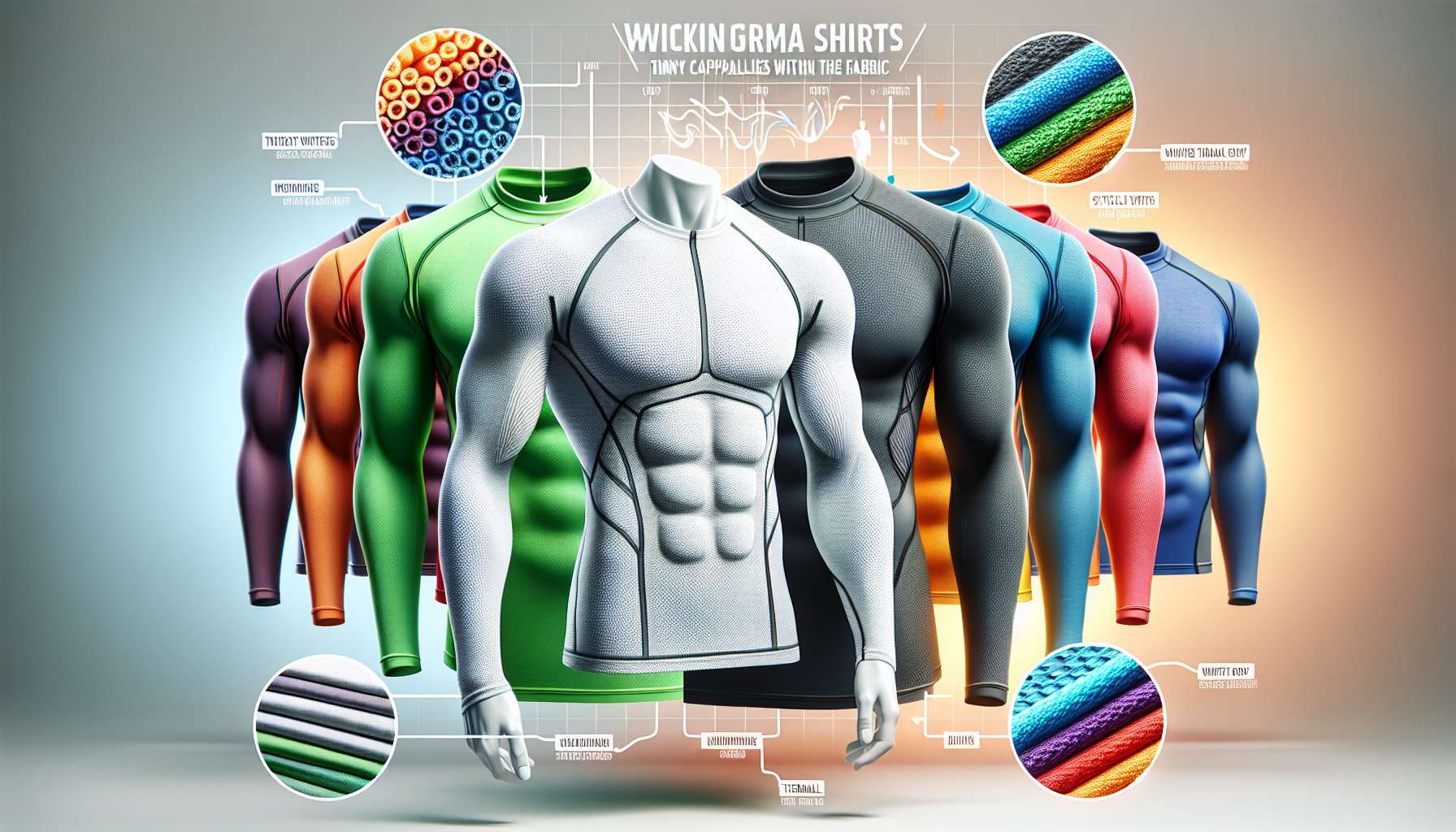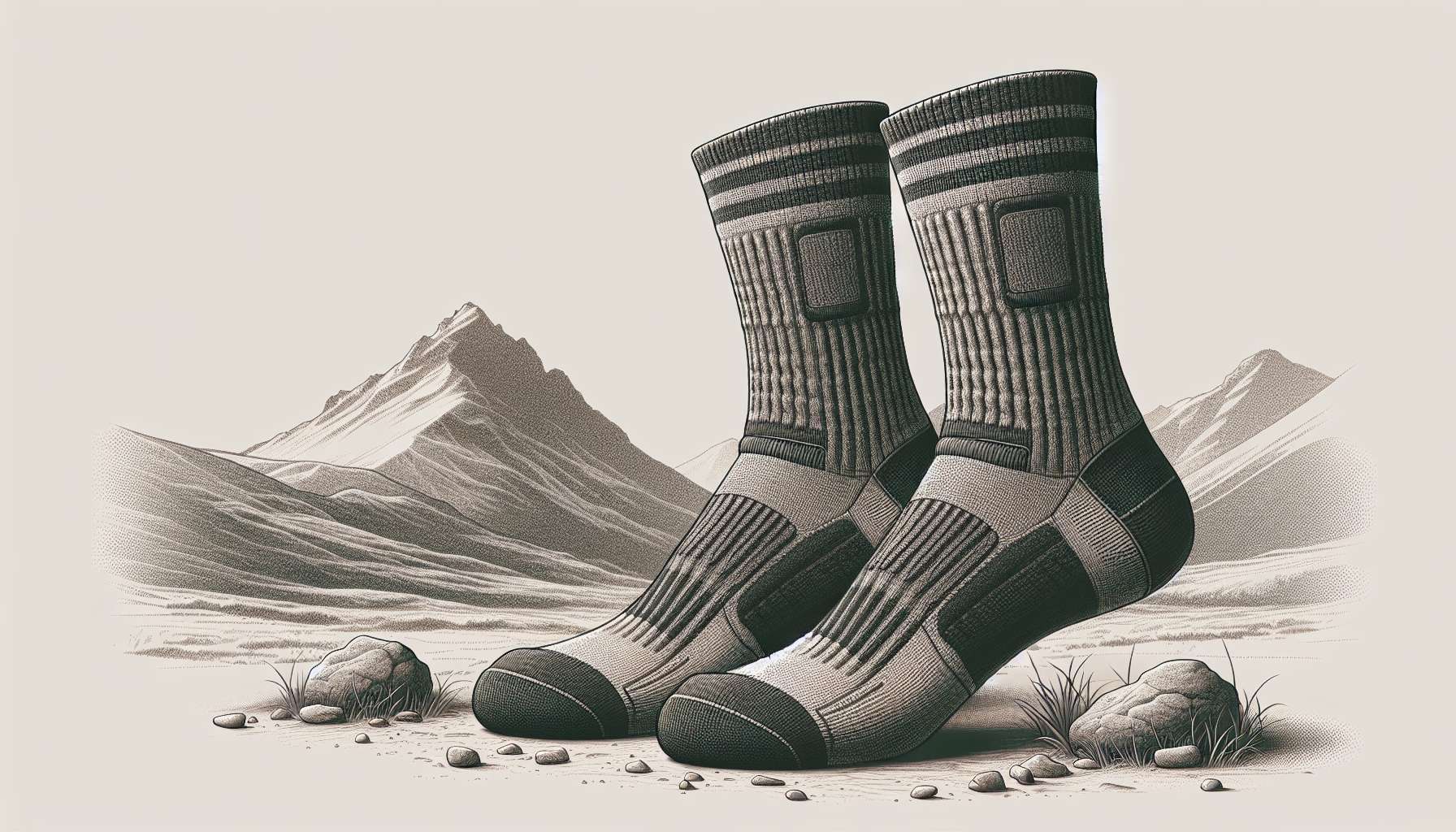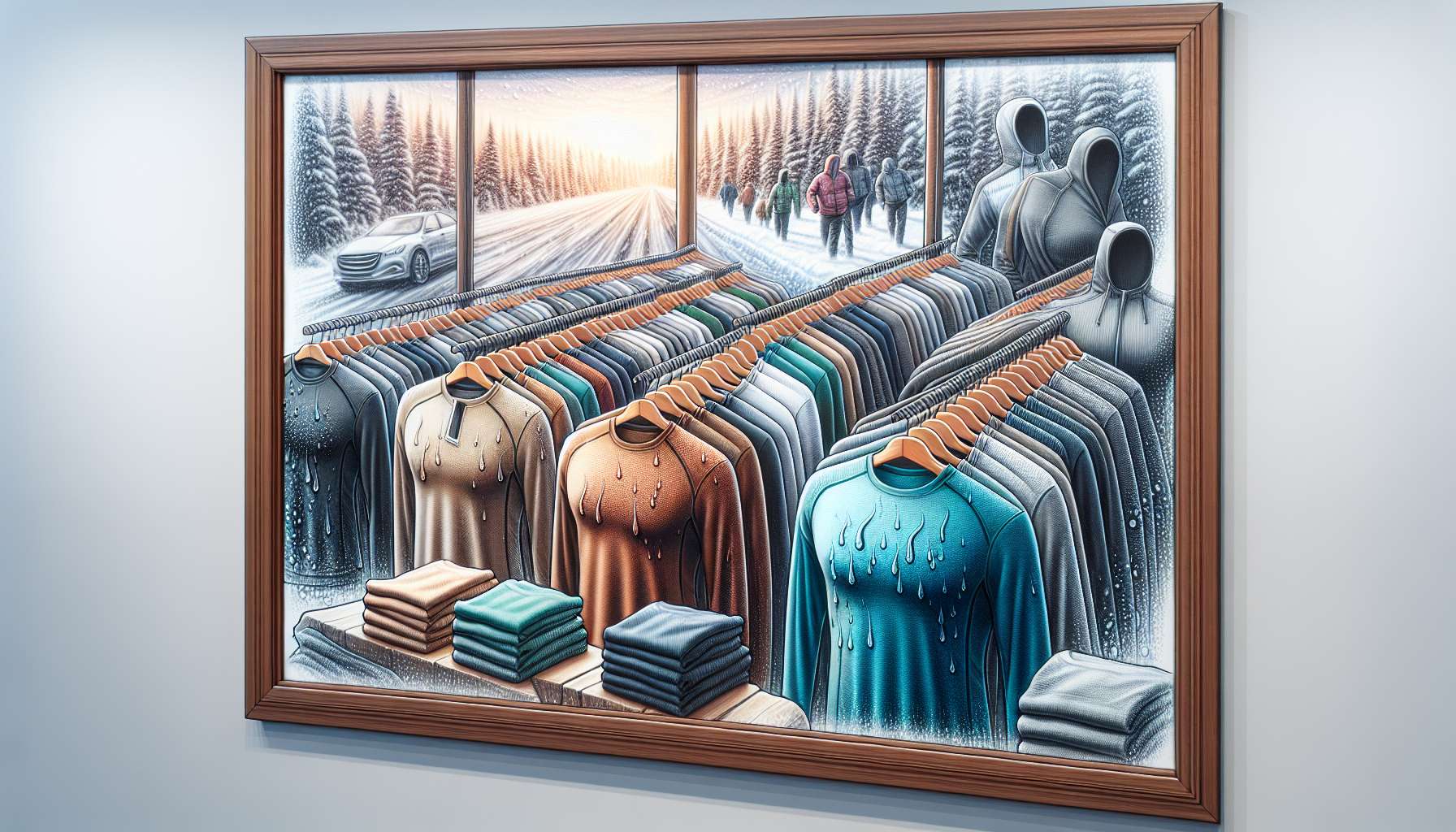The Ultimate Guide to Wicking Thermal Shirts: Stay Warm and Dry in Style
When the temperature drops and the cold wind starts to bite, staying warm becomes a top priority. Whether you’re hitting the slopes, going for a winter hike, or just braving the chilly weather, having the right gear can make all the difference. Enter wicking thermal shirts the ultimate solution for keeping you warm, dry, and comfortable in cold conditions. In this comprehensive guide, we’ll delve into the world of wicking thermal shirts, exploring their benefits, how they work, and why they’re a must-have addition to your winter wardrobe.
The Science Behind Wicking Thermal Shirts
Wicking thermal shirts are specially designed garments that are made from moisture-wicking fabrics. These fabrics are engineered to pull moisture away from the skin and spread it across the fabric’s surface, where it can evaporate more easily. This process helps to regulate your body temperature by keeping you dry and preventing sweat from sticking to your skin. Unlike traditional cotton shirts, which can become saturated with sweat and cling to your body, wicking thermal shirts help to keep you comfortable and dry, even during intense physical activity.
One of the key reasons why wicking thermal shirts are so effective is their construction. These shirts are typically made from synthetic materials such as polyester or nylon, which have hydrophobic properties. This means that they repel water and are able to transport moisture away from the skin quickly. In addition, wicking thermal shirts often feature special weaves or knit structures that enhance their moisture-wicking capabilities. These fabrics are also lightweight, breathable, and quick-drying, making them ideal for high-performance activities in cold weather.
The Benefits of Wicking Thermal Shirts
There are numerous benefits to wearing wicking thermal shirts, especially when compared to traditional cotton or wool garments. Here are just a few of the advantages:
1. Moisture Management
Wicking thermal shirts excel at managing moisture, keeping you dry and comfortable even when you’re working up a sweat. By wicking moisture away from your skin, these shirts help to prevent the buildup of sweat and odor, allowing you to stay fresh and dry all day long.
2. Temperature Regulation
Because wicking thermal shirts help to regulate your body temperature by keeping you dry, they are ideal for layering in cold weather. Whether you’re skiing, snowboarding, or just taking a winter walk, these shirts will help you stay warm and comfortable without overheating.
3. Durability
Wicking thermal shirts are designed to withstand the rigors of outdoor activities. They are often treated with special coatings or finishes that enhance their durability, making them resistant to abrasion, fading, and stretching. This means that your wicking thermal shirt will last for many seasons to come.
4. Versatility
Wicking thermal shirts are incredibly versatile and can be worn for a wide range of activities. Whether you’re hitting the gym, going for a run, or just running errands around town, these shirts are a stylish and practical choice for staying warm and dry in any situation.
Choosing the Right Wicking Thermal Shirt
When it comes to choosing a wicking thermal shirt, there are a few key factors to consider:
1. Fabric
Look for shirts that are made from high-quality moisture-wicking fabrics such as polyester or nylon. These materials are lightweight, breathable, and quick-drying, making them ideal for cold-weather activities.
2. Fit
Make sure to choose a wicking thermal shirt that fits snugly but not too tightly. A good fit will help the shirt wick moisture away from your skin more effectively and prevent chafing or discomfort during physical activity.
3. Style
Wicking thermal shirts come in a variety of styles, from long-sleeve crew necks to short-sleeve V-necks. Choose a style that suits your personal preference and the activities you’ll be doing while wearing the shirt.
By taking these factors into account, you can find the perfect wicking thermal shirt to keep you warm, dry, and comfortable all winter long.
Expert Opinions on Wicking Thermal Shirts
We spoke to outdoor apparel expert, Sarah Thompson, to get her take on wicking thermal shirts. According to Sarah, “Wicking thermal shirts are a game-changer for anyone who loves outdoor activities in cold weather. Their ability to keep you dry and comfortable, even during intense physical activity, is unmatched by traditional fabrics like cotton or wool.”
She also emphasized the importance of choosing the right fabric and fit when selecting a wicking thermal shirt. “It’s crucial to choose a shirt that is made from high-quality moisture-wicking materials and fits well to maximize its performance,” Sarah advised.
Common Misconceptions About Wicking Thermal Shirts
Despite their many benefits, there are some common misconceptions about wicking thermal shirts. One of the most prevalent myths is that these shirts are only suitable for athletes or outdoor enthusiasts. In reality, wicking thermal shirts are a versatile and practical option for anyone looking to stay warm and dry in cold weather.
Another misconception is that wicking thermal shirts are not as warm as traditional wool or fleece garments. While it’s true that wicking thermal shirts are lightweight and breathable, they are designed to trap heat close to the body and keep you warm in cold conditions.
Conclusion
To wrap things up, wicking thermal shirts are a must-have addition to your winter wardrobe. With their advanced moisture-wicking properties, temperature-regulating capabilities, and durability, these shirts are the perfect choice for staying warm and dry in cold weather. Whether you’re hitting the slopes, going for a winter hike, or just braving the chilly weather, wicking thermal shirts will keep you comfortable and stylish all season long.
So why wait? Upgrade your winter wardrobe with a high-quality wicking thermal shirt today and experience the difference for yourself!




